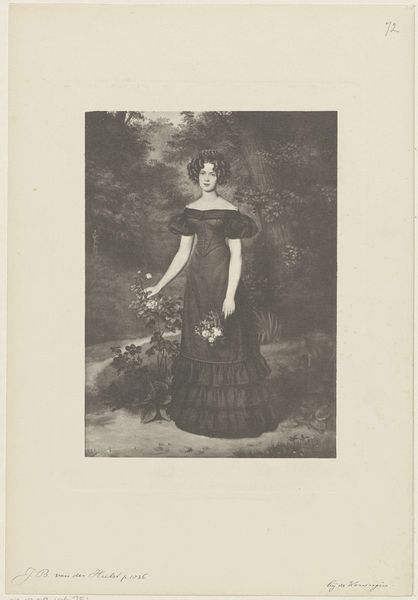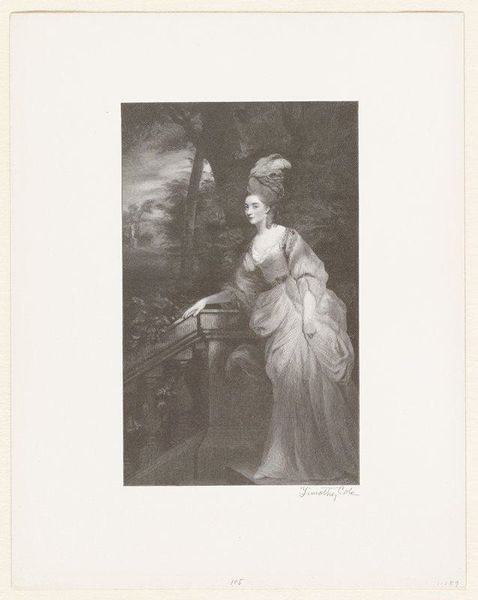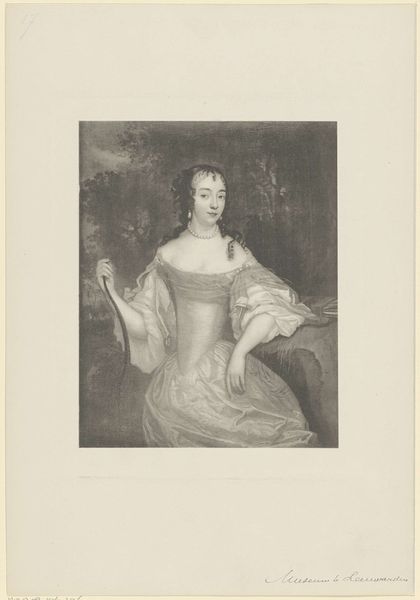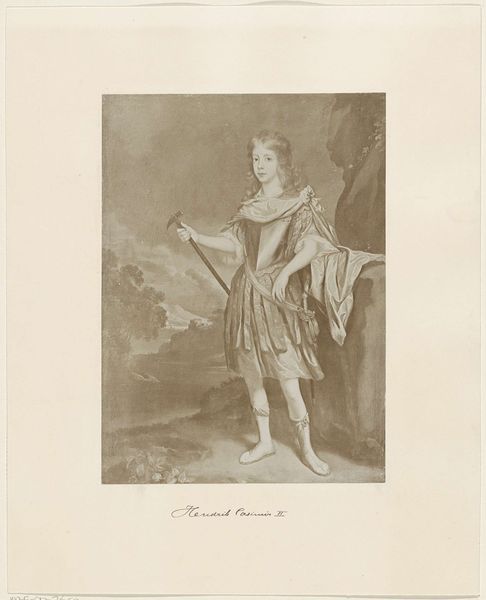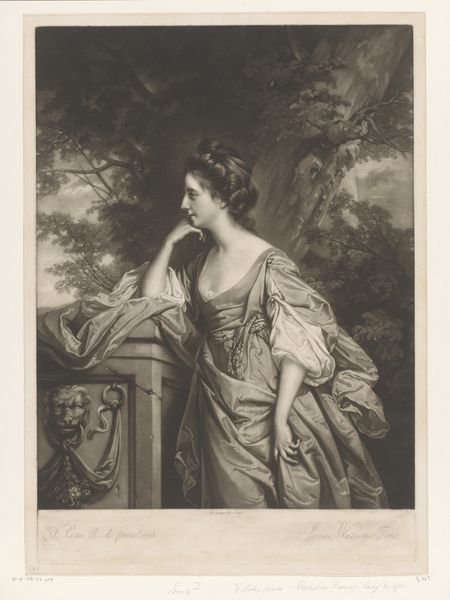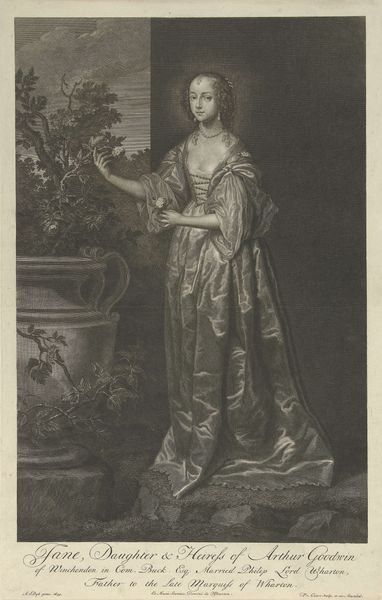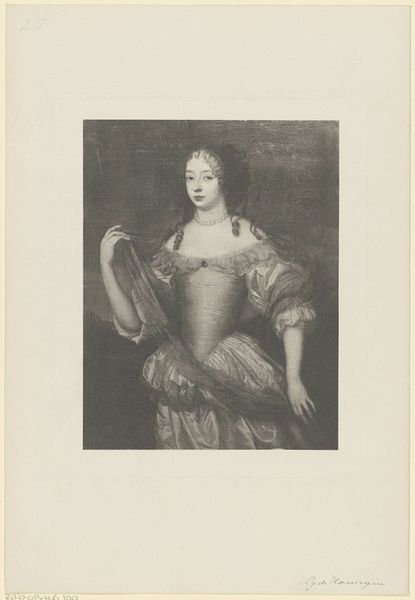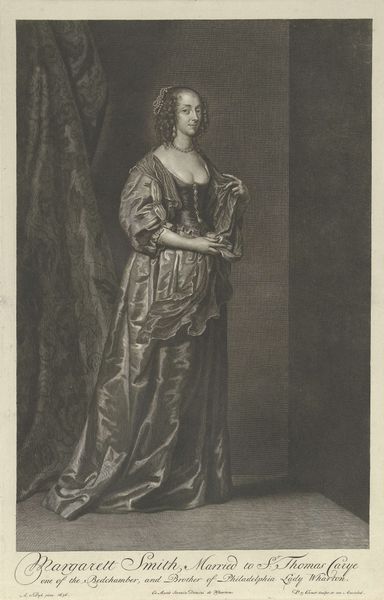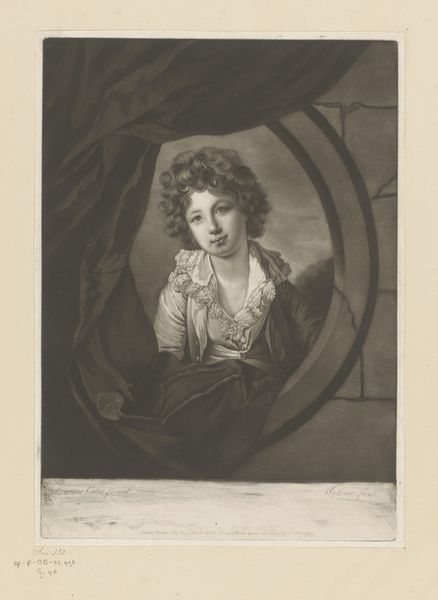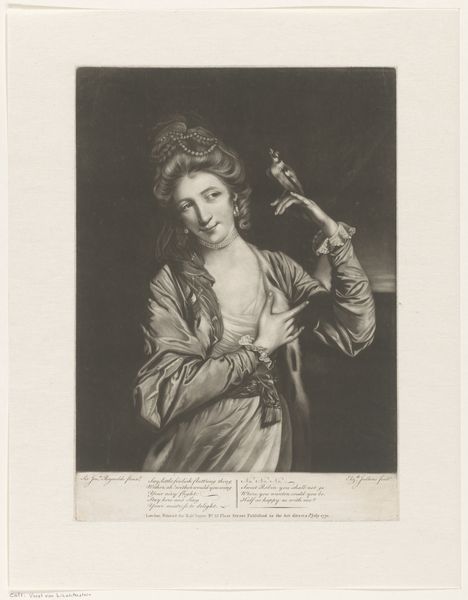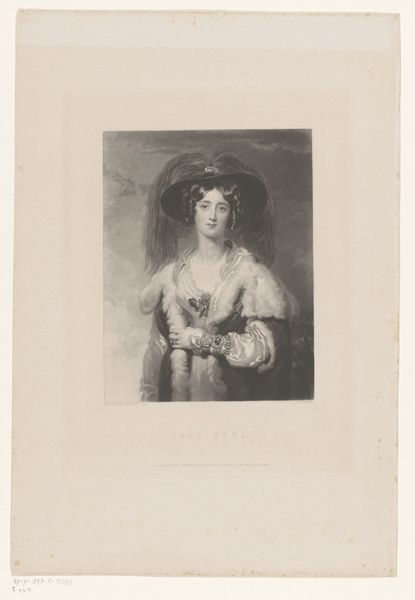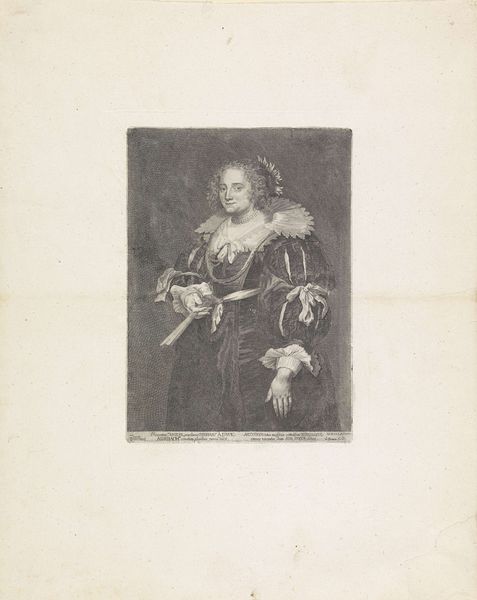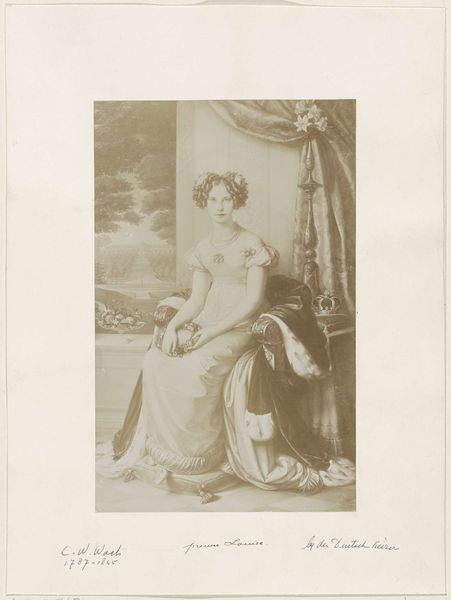
drawing
#
portrait
#
drawing
#
history-painting
#
academic-art
Dimensions: height 230 mm, width 178 mm
Copyright: Rijks Museum: Open Domain
This is an engraving of Hendrik Casimir II, Count of Nassau-Dietz, made by an anonymous artist, and currently held at the Rijksmuseum. What does it mean to produce a portrait of a member of the ruling class? It gives us clues about the society that produced the artwork. The symbols, objects and setting of the portrait all suggest a social hierarchy in the Netherlands. Hendrik is portrayed with the attributes of a ruler: expensive garments, in a dominating position. What's more interesting is the gaze, which is set at a slight remove, and a certain softeness in the depiction of the face. These give us some idea of how people in the Netherlands viewed their rulers. Art history gives us a way to understand the lives of people in the past. We can read books and articles about the period in which the artwork was made, and also look at other portraits from the same time. By doing this, we can get a better sense of the social and institutional context in which this portrait was made, as well as its place in the development of Dutch art.
Comments
No comments
Be the first to comment and join the conversation on the ultimate creative platform.

